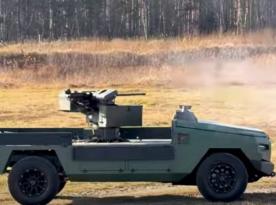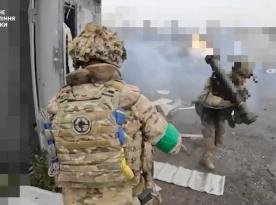Yesterday on April 8th, during one of the assaults near Krasnohorivka, the russian invasion forces used a T-72 tank, which was tuned with, at first glance, a grotesque form of protection against Ukrainian drones that looks like a shed or barn. What stood out was that this vehicle was heading the column, while the other tanks for some reason did not receive the same protection.
This episode was met with mixed opinions. On the one hand, it looks like a fair reason for mocking the russians, and on the other, there were currently unverified reports that this covered T-72 was able to avoid being hit and managed to unload the landing squad at one of the positions.
Read more: russian Occupiers Want to Protect Tanks From Drones With Fans

Later, additional images of this russian T-72 with a "shed" against drones appeared in the public domain, which gives an opportunity to better assess the functionality of this format of defense, improvised by the russian troops.
To begin with, we can see that this enemy tank was equipped with a KMT-7 anti-mine roller, from which we can conclude that the reason for this vehicle to be at the head of the column was specifically to break through mine barriers created by the Ukrainian Defense Forces, and the "shed" was to minimize the possibility of being hit by Ukrainian drones, accordingly. We can also recall from the experience of previous battles in Ukraine that taking down the first vehicle usually disrupts the column and gives a time window to deploy anti-tank weapons or call in an artillery strike.
Separately, we should note that since the images are not clear, it is quite difficult to see whether the russians put the so-called Tsar-EW electromagnetic interference system on the turret of this T-72, then covered by a "shed," or not. Either way this should be noted because any russian innovations on the battlefield must be subjected to as detailed an analysis as possible.

A particularly important detail is the design of the "shed" itself and its possible functionality. In the initial images, it looked like it was just a bulky structure that could increase the tank's protection at the expense of a possible deterioration in mobility, and it was hardly possible to place the landing party under its roof.
However, a bit later, additional images of this tuned vehicle appeared, where we can see that in the aft part of this structure could be spacious enough to accommodate a handful of soldiers. That is, it turns out that the "shed" protects not only the tank itself, but also the landing party on board.

At this point, here's another issue. More and more often there are reports about russian invaders now constantly trying to land 20–25 paratroopers from armored vehicles at once to assault a Ukrainian position.
At the moment, it is unknown why exactly this number of troops are deployed in a party. Namely, whether the russians carry several assault teams on one vehicle at once, which should operate autonomously but covered by one tank or AFV, or whether the occupiers made permanent changes to the structure of their assault groups increasing their size.
Read more: Characteristics of Trophy russian "Tsar-EW" for T-72B3M Tank Given by Ukrainian Expert














